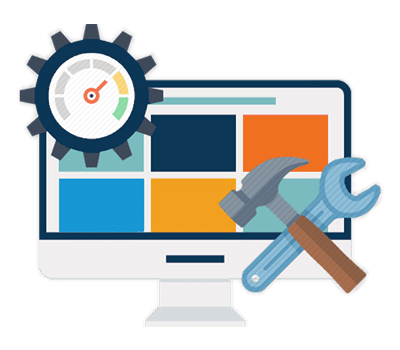

It’s likely that if you have an extremely slow webpage, you won’t make it to the first page of Google.ĭespite this, page speed is often overlooked when it comes to setting an SEO strategy, even though it has greatly impacted some brand’s organic traffic. It’s estimated that the average page loading speed for the first page result on Google is 1.65 seconds. While Google says this really only affects the slowest websites, site speed also has an affect on other ranking factors such as bounce rates and time on site.
#Website acceptable locad times update
However, when looking more closely at Google’s “Speed Update,” you’ll notice that Google states the update “will only affect pages that deliver the slowest experience to users and will only affect a small percentage of queries.” They found that there was no correlation between speed and first page Google rankings. One study conducted by Backlinko looked at 11.8 million Google search results to understand if there was a correlation between page speed and rankings. While Google deemed website load time a ranking signal, marketers are still wary. There is a lot of debate in the SEO world discussing just how important load time is to rankings and traffic.

However, many people are still not making it a priority. That means your website will be ranked based on your mobile presence, not desktop.Īs a result, if your site is slow on mobile, your search rank may be knocked down a few spots. In 2018 Google rolled out mobile-first indexing and made it a ranking factor for mobile as well. In 2010, Google included page speed as a ranking factor for desktop. If you still can’t see the connection between page speed and revenue, we’re rounded up some of the best statistics below.

If your page load time is slow, they’ll bounce - affecting your bottom line. Why? A great website experience is what converts your customers - it pushes them down the buyer’s funnel, one page at a time. No matter what conversions look like to your business, your website load time has a huge effect on conversion rates and your total revenue. Conversions can also happen in the form of email sign-ups, submitting a contact form, or answering a survey question. However, purchases aren’t the only online form of conversions. For example, if you own an eCommerce website that sells women’s clothing and you have a web page designed for women’s dresses, a user converts when they decide to buy a dress from your site. The Effect of Load Time on Revenue: Statistics + TrendsĪ webpage’s conversion rate is the measurement of users who take the desired action the webpage was designed to do. desktop page load time, we cover additional statistics below. To fully understand the state of mobile vs. It’s safe to say that most mobile and desktop landing pages have work to do in the department of page speed. They found that the average time it takes to fully load a webpage was 10.3 seconds on desktop and 27.3 seconds on mobile. In 2019, Backlinko conducted a study analyzing five million desktop and mobile pages. They found that the average time it took for a mobile landing page to load is 22 seconds, despite over 50% of visitors leaving a page that takes longer than three seconds to load. Their consensus: the majority of mobile sites are too slow. In 2017, Google did an analysis of 900,000 landing pages across several countries and industry sectors to understand the state of mobile speed. With mobile becoming the more popular way to browse online, it’s critical for businesses to keep their mobile page speed top of mind. The amount of time people spend on their mobile devices increases year over year. Desktop: Average Page Load Time StatisticsĪs we navigate into a mobile-first world, a fast user experience is imperative. The longer your page takes to load, the more likely users will lose focus and interaction. It’s safe to say that these numbers may have increased in 2021.

If you’re an eCommerce website, you should shoot for less than two seconds or you risk losing potential customers.Īccording to a study conducted by Google in 2017, as page load time goes from one second to three seconds, the probability of a bounce increases by 32%. However, ideally, your website should load as fast as possible. How Fast Should a Website Load in 2021?īest practice is to get your website to load in less than two to three seconds, according to John Mueller, the Senior Webmaster Trends Analyst at Google. Now that you know the basics, let’s dive into exactly how fast your website should load and why it is so important.
#Website acceptable locad times download
Render time is the time it takes for the server to fully download the page where visitors can use and interact with the content on the page.


 0 kommentar(er)
0 kommentar(er)
